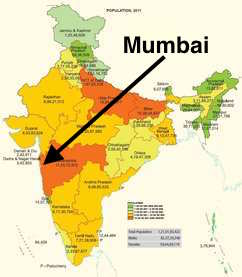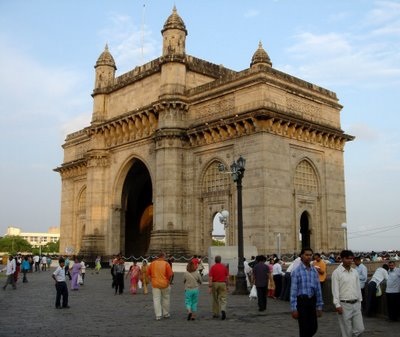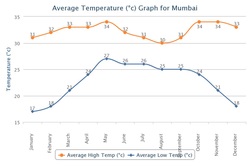Location and City Characteristics
Location & Economy |
Mumbai (previously known as Bombay) is the capital city of Maharashtra located on the West coast of India, which is the home to the well known, Bollywood. Bollywood has become a thriving multi-million dollar industry producing more movies than anywhere else in the world, including Hollywood. Along with a thriving film industry, Mumbai is also a leading commercial, financial and industrial Megacity. It has the highest GDP (Gross Domestic Product) in the South, West and Central Asian regions. It is also the wealthiest city in India which is due to Mumbai being the home to multiple, high-income financial institutions, increasing the poor living standards of Mumbai inhabitants by offering higher paying jobs.
TourismThe Gateway of India (left) is one of the main tourist sites in Mumbai, Maharashtra. It is over 90 years old, since its first opening, and took 13 years to build. Some other tourist sites include: Chowpatty Beach, Siddhivinayak Temple, Sanjay Gandhi National Park, the Elephanta Caves and Island and Essel World.
Dharavi SlumDharavi Slum is the largest slum in Asia and is home to more than a million inhabitants. This is due to rent being low as $4 a month, in some areas, compared to house rents in the city being among the highest rent in the world. Many buy cheap shelters to earn their living at first but there some second or third-generation residents living there today. |
Want to read more? Learn about Mumbai's Population Characteristics. |
Advance you understanding of Mumbai as a Megacity by reading about their migration, languages, religion and more! |
Tessa Styles 8C



